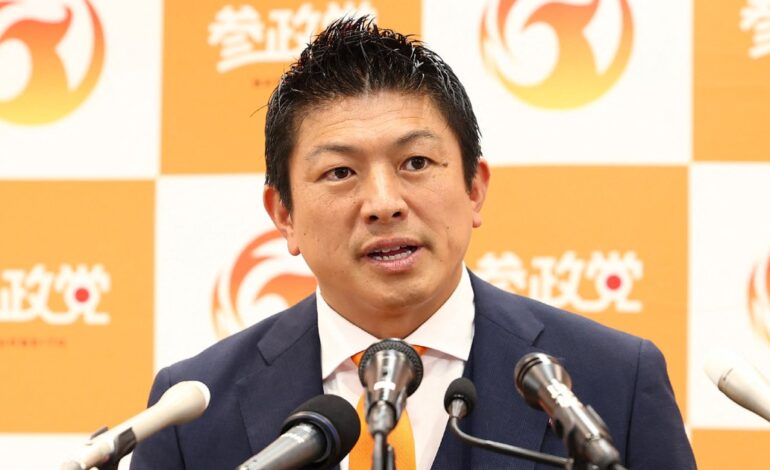Nationalist Party Sanseito Gains Ground in Japan’s Latest Elections

TOKYO — The right-wing populist party Sanseito has made significant strides in Japan’s parliamentary elections held on March 10, 2024. The party, which promotes a “Japanese first” ideology, captured 14 additional seats in the upper house, increasing its representation from one to 15 in the 248-seat chamber. This rise reflects growing discontent among voters regarding economic issues, immigration, and tourism.
Sanseito leader Sohei Kamiya, who previously held the party’s only seat, has transformed Sanseito from its origins as a fringe anti-vaccination group into a formidable political force. The party’s surge aligns with a broader global trend toward nationalism, influenced in part by figures like former U.S. President Donald Trump. Jeff Kingston, a professor of Asian studies at Temple University, noted that Kamiya “fancies himself a mini-Trump” and benefits from similar populist sentiments.
At a rally in Tokyo’s Shiba Park, Kamiya articulated his stance on foreign workers and investment, stating that his proposed restrictions are not driven by xenophobia, but rather by the implications of globalization. He questioned why Japan, with its strong economy and a population of 120 million, should depend on foreign capital amidst a labor shortage. “Japan is still the fourth-largest economy in the world,” he asserted, appealing to voters who are feeling the pinch of economic stagnation.
The election results pose significant challenges for Japanese Prime Minister Shigeru Ishiba, whose conservative Liberal Democratic Party has lost its majority in both houses of parliament. Ishiba faces increasing pressure to resign as dissatisfaction with the status quo grows. Kingston explained that many voters, particularly younger generations, feel that their interests are overlooked by the establishment, which has historically favored older demographics.
Kamiya’s energetic approach and social media acumen contrast sharply with more traditional leaders like Ishiba and Yoshihiko Noda of the Constitutional Democrats, who are perceived as out of touch. With rising wages, increasing prices, and grim employment prospects, many voters turned to Sanseito, viewing the party as an advocate for their grievances.
The party’s platform resonated with individuals such as Yuta Kato, a 38-year-old hairdresser who expressed concerns about a growing number of immigrants not adhering to societal rules. Kato remarked, “The burden on citizens, including taxes, is getting bigger and bigger, so life is getting more difficult.” This sentiment illustrates the appeal of Sanseito’s message to those who feel disenfranchised.
While Sanseito’s increased representation is noteworthy, it remains a small player in the broader political landscape, lacking sufficient seats to exert significant influence independently. The center-right Democratic Party for the People also saw gains, increasing its seats from five to 16. Sanseito, whose name translates to “Participate in Politics,” emerged in 2020 during the COVID-19 pandemic, initially attracting conservative support through YouTube content that propagated conspiracy theories related to vaccinations and mask mandates. The party’s YouTube channel has garnered nearly 480,000 subscribers.
The rise of Sanseito comes amid a notable increase in foreign residents in Japan, which reached almost 3.8 million in 2023, according to the Immigration Services Agency. Critics argue that the party’s rhetoric has intensified hostility toward foreigners, as evidenced by a recent survey indicating that nearly two-thirds of respondents believe foreigners receive “preferential treatment.” During a rally, protesters displayed signs reading “No Hate” and “Racists Go Home,” challenging the party’s narrative.
Kamiya has denied any intention of fostering division, stating, “We have no intention of discriminating against foreigners, nor do we have any intention of inciting division. We’re just aiming to firmly rebuild the lives of Japanese people who are currently in trouble.”
The pivotal question remains whether Kamiya can harness the current political discontent and translate it into a sustainable national movement. As the political landscape in Japan shifts, the implications for governance and international relations will be closely monitored.






